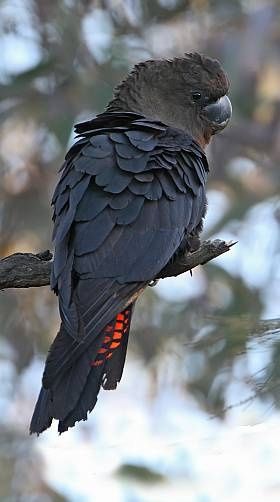
Conservationists feared the future of endangered wildlife protected on Kangaroo Island after the bushfires engulfed a third of the entire area.
Most key feeding and breeding areas on the north coast of the island were lost to fire, said Daniella Teixeira, a scientist researching the birds at the University of Queensland.
So far, the fires on the island have burned around 155,000 hectares, and most of the blazes were located in the conservation areas.
Wildlife experts specifically mentioned the Kangaroo Island dunnart, an endangered mouse-like marsupial, and the glossy black-cockatoo as their main concern. Both of these animals live in the critically burned biodiversity areas.
"Every bird lost is a tragedy."
Dr. Gabriel Crowley, of the Centre of Biodiversity and Conservation Science at the University of Queensland, said that the fire came just in time when the female cockatoos were sitting on their eggs and are probably too reluctant to save themselves.
There could be a chance that some flock of cockatoos could flee to the Dudley Peninsular. However, the birds might struggle to feed themselves and find new nesting sites.
The conservation efforts for the species started in the 1990s after the population went down to a critically low level of 150. Two decades later, the estimated population has gone up to 400.
Dr. Crowley said that she's a bit desperate on saving this "very endearing species" especially since their survival will depend on an intensive recovery effort. She has been aiding the conservation initiative for more than 22 years.
A Little Noah's Ark
There were eight sites dedicated to protecting endangered species, according to the Kangaroo Island Land for Wildlife organization. All are private lands with a built-in monitoring system.
All of these sites were extensively burnt, including the cameras said Heidi Groffen, a resident ecologist at Land for Wildlife. They are currently surveying the conservation sites for any patches that the fire did not touch.
Sam Mitchell, co-owner of the Kangaroo Island Wildlife Park, said that they were tending many injured animals rescued by island residents. Unfortunately, at least a third of these animals were euthanized because of severe injuries like charred hands and feet that are beyond saving.
The island is also conserving koalas after it was introduced in the 1920s in the hope of reversing the impact of the fur trade on the mainland. Decades later, the population had grown as high as 50,000 that some people already considered them as pests.
However, Mitchell feared that probably half of the population of koalas on the island have perished.
The rare green carpenter bee might also have been a victim of the fire. According to Dr. Richard Glatz from the University of Adelaide, the species can only be on Kangaroo Island and in some ranges near Sydney.
Dr. Glatz, who moved to the island after being captivated by its beauty, he still can't believe that unspoiled habitats were now lost.
It is believed that the fires on the island started after a bolt of lightning hit something flammable in the Flinders Chase National Park. Aside from the wildlife casualties, two people have died due to the fire.
© 2025 NatureWorldNews.com All rights reserved. Do not reproduce without permission.




